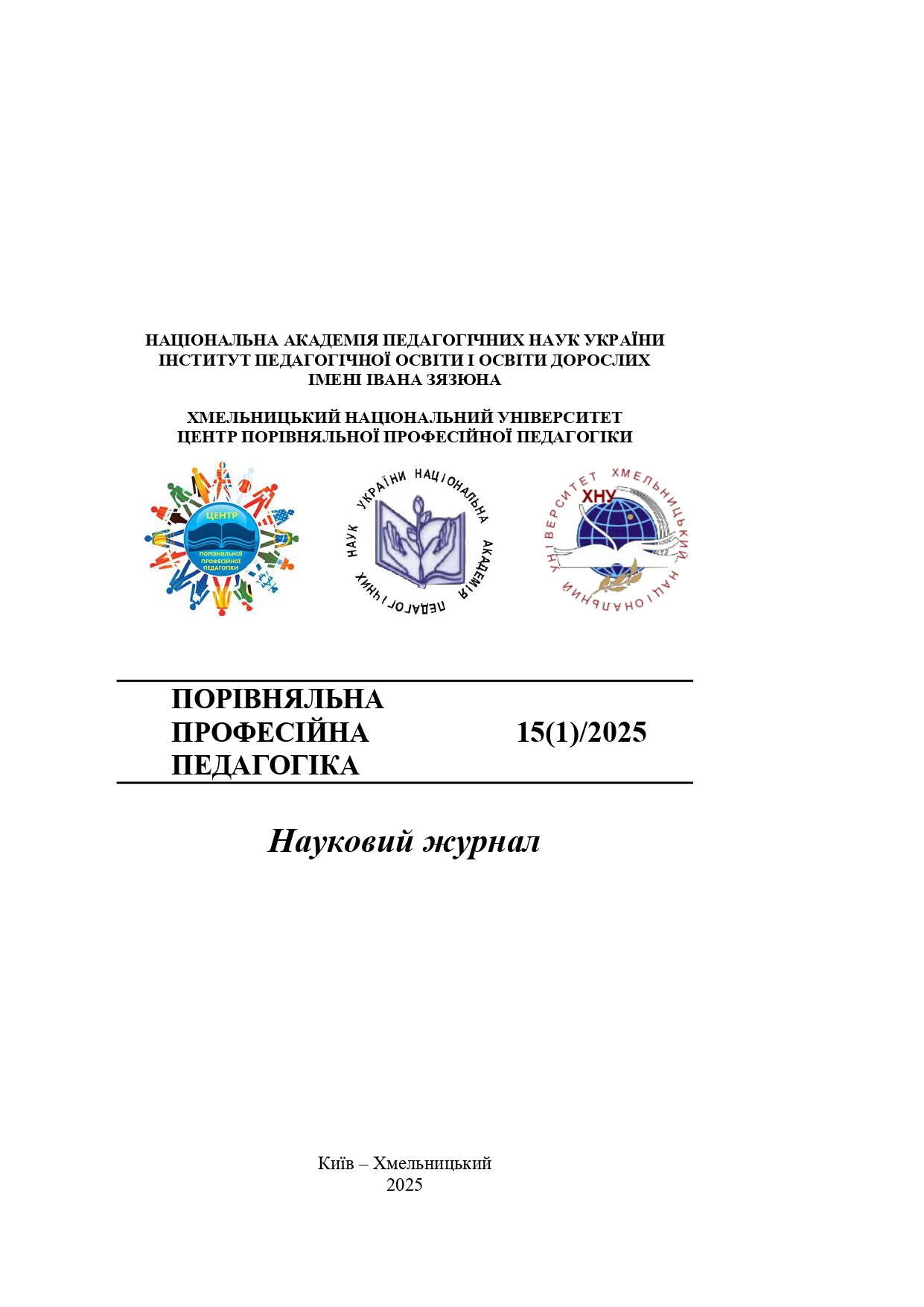EDUCATIONAL POTENTIAL OF CHOREOGRAPHY IN THE CONTEXT OF DANCE/MOVEMENT THERAPY: THE EXPERIENCE OF THE USA
DOI:
https://doi.org/10.31891/2308-4081/2025-15(1)-9Keywords:
art therapy, choreography, choreotherapy, Dance/Movement Therapy, pedagogical impact, dance therapist, training, art pedagogy, choreotherapeutic methods, educational programs, the USAAbstract
The article analyzes the experience of the United States in using choreography as a modern educational tool of art therapy aimed at restoring emotional balance, fostering creative self-expression, and promoting social integration. It is established that choreography in the context of Dance/Movement Therapy (DMT) functions not only as a form of artistic self-expression, but also as a pedagogical and therapeutic means that combines psychological, educational, somatic, and social components of the educational and corrective process. In response to current challenges (post-traumatic stress, social isolation, emotional dysregulation), choreographic practices contribute to the development of self-regulation skills, empathy, and interpersonal interaction. The study highlights that the systematic implementation of DMT in educational and rehabilitation institutions in the USA supports not only the acquisition of movement-based stress-coping strategies but also the development of critical thinking, creativity, and communication skills among participants. A historical and social analysis reveals the origins of DMT in the USA and outlines the main activity areas of the American Dance Therapy Association (ADTA). It is found that, within the American educational context, choreography serves as a means of social inclusion and is widely used in schools, universities, special and rehabilitation practices. Practical cases of applying choreotherapeutic methods in the USA for working with various client categories are presented. The effectiveness of choreography as a pedagogical tool of art therapy is substantiated, as it integrates artistic-aesthetic, bodily-movement, and psycho-emotional components, creating conditions for the holistic development of the individual. The study confirms that educational goals (such as fostering creativity, self-expression, and communicative competence) can be harmoniously combined with the therapeutic needs of clients (such as reducing anxiety, developing bodily awareness, and restoring social interaction). Emphasis is placed on the growing need for highly qualified professionals capable of integrating knowledge of psychology, somatics, choreography, psychotherapy, pedagogy, neuroscience, and clinical practice. The article identifies the requirements for professional qualifications and training of dance therapists in the USA and provides a list of educational programs offered by leading American universities for the preparation of dance/movement therapy specialists.
Downloads
Published
How to Cite
Issue
Section
License
Copyright (c) 2025 ДМИТРО БІДЮК

This work is licensed under a Creative Commons Attribution 4.0 International License.


